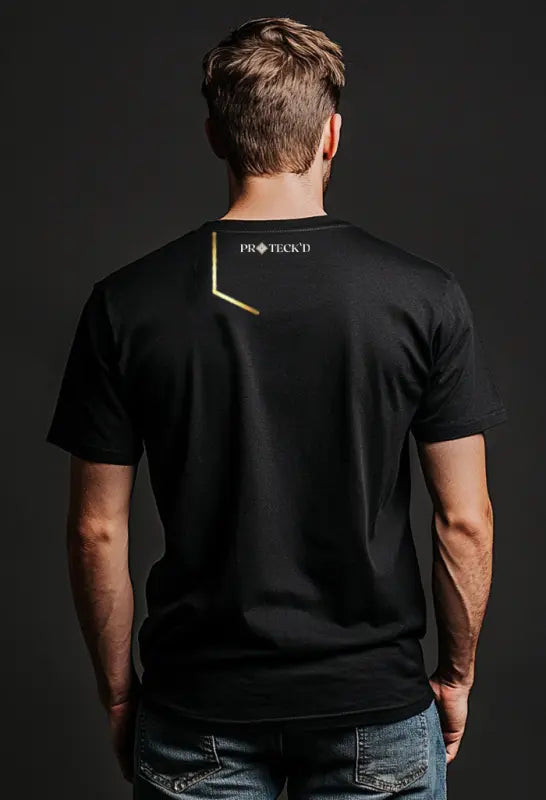Does Chocolate Contain the Stimulant Caffeine?
Chocolate is often considered to be one of the most delicious sweets available. It is a delectable delight that also has numerous positive effects on one's health.
There is a widespread misconception that chocolate contains caffeine, however this is not the case. This rumor has been around for a considerable amount of time.
- The quantity of caffeine that is included in chocolate varies, depending on the kind of chocolate that is consumed, although all chocolate does contain some caffeine.
- Dark chocolate normally has a higher caffeine content than milk chocolate, whereas white chocolate has none at all. Milk chocolate typically has less caffeine than dark chocolate.
- A serving size of milk chocolate that is 1.5 ounces (43 grams) has around 6 milligrams of caffeine on average, whereas the same quantity of dark chocolate contains approximately 20 milligrams of caffeine on average.
- The amount of caffeine that is included in chocolate may also vary from brand to brand and from manufacturing method to manufacturing process. There is a possibility that the caffeine content of certain artisanal chocolate products is greater.
- It is essential to keep in mind that the quantity of caffeine found in chocolate is negligible in comparison to the amount of caffeine that can be obtained from other beverages, such as coffee or tea.
- Some people may be sensitive to caffeine and suffer unpleasant side effects, such as anxiety, sleeplessness, or jitters, after drinking chocolate or other caffeinated drinks or foods. While caffeine is usually regarded to be safe in moderate levels, some people may be sensitive to caffeine and experience these negative side effects.
- If you are worried about the amount of caffeine you consume on a daily basis, it may be good to check the nutrition labels on chocolate products and choose those with a reduced caffeine level or pick alternatives that do not contain any caffeine.
What percentage of caffeine may be found in chocolate?
Caffeine may be found in chocolate, the quantity, on the other hand, fluctuates quite a bit depending on the kind of chocolate. Cocoa beans are liquified in order to make chocolate, and the resulting liquid contains both cocoa butter and cocoa solids. Caffeine can only be found in the solid form of cocoa. Because it contains no other ingredients besides cocoa butter, white chocolate can be considered a treat that is free of caffeine. On the other hand, as it has the largest percentage of cocoa solids, dark chocolate has the highest caffeine content of any kind of chocolate.
In spite of this, the quantity of the stimulant that can be found in chocolate is very little when compared to the amount that can be found in something like a cup of coffee. A single bar of dark chocolate has around 29 milligrams of caffeine, whereas one cup of coffee contains approximately 94 mg. Keep in mind that the processing and roasting methods used on cocoa beans may also have an effect on the total amount of caffeine that is present in a final bar of chocolate.
Does eating chocolate make you feel more energized?
Not only does chocolate include a trace amount of caffeine, but it also contains theobromine, which may make it an excellent choice for a snack to have on hand if you want a burst of energy in a hurry. Theobromine is another sort of stimulant that has anti-inflammatory properties and may favorably improve your mood by activating your neural system. It achieves these effects by causing your neurological system to become more active.
Caffeine
A number of plants, such as coffee beans, tea leaves, and cacao beans, contain the stimulant known as caffeine. Caffeine may also be extracted from these foods. It is a stimulant of the central nervous system as well as a diuretic, which means that it increases the amount of urine that you expel. It is also possible for it to raise levels of alertness and energy, but the influence it has on your body is often rather modest, and it is quite unlikely that it will produce any adverse side effects.
The quantity of caffeine that is included in chocolate may vary greatly depending on a number of aspects, including where it was cultivated and how it was manufactured. However, the seeds that are contained inside the cacao pods are the primary source of the chocolate's caffeine content.
Caffeine, in the form of xanthine alkaloids, may be found in cocoa pods, much as it is in coffee and tea. These alkaloids can be discovered in the cocoa seeds. Theobromine and caffeine are the two xanthine alkaloids that are found most often.
It has been shown that both coffee and theobromine may promote alertness, as well as improve mood and bring down blood pressure. They are both stimulants, but caffeine is far more powerful than its counterpart, theobromine.
In spite of the fact that it only contains little amounts, having a source of caffeine on hand might be useful if you need a burst of energy or want to feel more awake and aware throughout the course of the day. Because dark beans have a larger proportion of cacao solids than milk beans, dark chocolate, in particular, may have a much higher quantity of caffeine than milk chocolate.
Because the cocoa solids are filtered away during the manufacturing process of white chocolate, it does not contain any caffeine at all. On the other hand, dark chocolate does contain caffeine. The remaining component is cocoa butter, which consists of the natural lipids that are found in cocoa beans.
The amount of cacao that is used in the production of a product may also result in a number of distinctive varieties of chocolate. While some manufacturers include a greater percentage of cocoa into their products, others utilize just a trace quantity.
Because of the manufacturing process, the quantity of caffeine that is contained in a single piece of milk chocolate might vary, but on average, it has between 20 and 40 milligrams of caffeine per 100 grams. This is about similar to the amount of caffeine that may be found in a standard cup of decaffeinated coffee.
It is essential to keep in mind that although while chocolate contains caffeine, it does not have the same impact as caffeine derived from beverages such as coffee or tea. It is very unlikely to have any adverse effects, but you should still drink it in moderation to prevent yourself from getting too much of it.
Theobromine
Theobromine is a kind of xanthine alkaloid that may be discovered in cocoa beans, which are one of the fundamental components of chocolate. Theobromine is a potent natural stimulant that is capable of boosting one's energy levels as well as their ability to concentrate. In addition to this, it has anti-inflammatory properties, which may contribute to your overall well-being and happiness.
There is a significant difference in the molecular structure of caffeine and that of theobromine, despite the similarities between the two. Theobromine possesses a methyl group, but caffeine just has one carbon atom in it. Caffeine is a stimulant. This discrepancy may seem to be insignificant; nevertheless, it is in fact the root cause of the majority of the variances that exist between these two compounds.
Theobromine has the ability to inhibit adenosine receptors in the body, which are the receptors that are responsible for creating weariness and discomfort in the muscles. Because of this, you are able to improve your performance throughout your workouts and activities.
It also raises cAMP, which is a sort of chemical signal that is essential for the healthy functioning of your muscles and is increased by this. The boost in cAMP that results from this helps you grow muscle, which is necessary for shedding excess fat and leading a healthy lifestyle overall.
Theobromine is found in a variety of items, such as teas, nutritional supplements, and coffee beans that have been roasted, among other places. Additionally, it is present in dark chocolate, cola nuts, and other foods and beverages that contain cocoa.
Additionally, theobromine increases the quality of your sleep while simultaneously elevating your mood. In addition to this, it is a very good source of the amino acid arginine, which plays a key role in maintaining healthy blood pressure and heart function. It is beneficial for treating a wide range of illnesses, including depression, obesity, and asthma, because to its anti-inflammatory qualities.
Theobromine, in contrast to caffeine, does not result in a feeling of euphoria, and both adults and children may ingest it without the danger of experiencing any adverse side effects. You should take between 350 and 500 milligrams of it daily, and it may be taken in capsule or powder form. It is strongly suggested that you begin with a lesser dose and progressively increase it until you attain the impact you seek.
Phenethylamine
PEA, also known as phenethylamine, is a monoamine alkaloid that has been shown to promote activity in the central nervous system. When combined with dopamine, PEA also has a modest antidepressant effect. The enzyme known as aromatic L-amino acid decarboxylase is responsible for its production. It is derived from the amino acid known as phenylalanine. It may be discovered in a wide number of foods, one of which being chocolate.
Although phenethylamine is not as addictive as caffeine, it does have some undesirable side effects, including the potential to cause an increase in hunger as well as intense desires for chocolate. It is thus suggested that individuals take chocolate or other sources of phenethylamine in moderation, such as tiny quantities of chocolate or other sources.
Chocolate is a well-liked and widely consumed snack item that is well-known for its luscious and sugary flavor. Cocoa beans, which are used in its production, may be found in West Africa as well as other regions across the globe. It is also well-liked as a meal since it contains a lot of antioxidants and has other positive effects on one's health.
In point of fact, it is rich in all three of those minerals: iron, potassium, and magnesium. It may also assist in the reduction of blood pressure, the enhancement of blood flow, and the promotion of a healthy respiratory tract. Additionally, it has been shown to improve one's mood, particularly when ingested in moderation and together with other nutrients like zinc and chromium. This is especially true in the case when both of these factors are present.
It is also considered to be a potent aphrodisiac and is supposed to boost one's urge to engage in sexual activity. This is due to the fact that phenethylamine stimulates the production of b endorphin in the brain, which is an opioid peptide that may generate euphoria in its recipient.
On the other hand, taking in an excessive amount of phenethylamine may have a negative effect on one's mood and exacerbate feelings of worry and despair. In addition to that, it has been connected to other health issues including obesity and an increased risk of cardiovascular disease.
The cocoa bean is the source of this substance, which is found in great quantities in the cacao plant (Theobroma cacao) and may be isolated from those beans. It is also present, but in lower concentrations, in kola nuts, guarana, yerba mate, and some types of tea leaves.
Phenethylamine is hazardous to the health of cats and dogs when consumed in significant quantities. Due to the fact that they do not metabolize it as quickly as people do, it is extremely dangerous for cats and dogs.
Theobromine and phenethylamine are two of the methylxanthines that may be found in chocolate, along with other methylxanthines. These chemicals are present in higher amounts in dark chocolate as compared to milk chocolate. Additionally, the more of these compounds that are taken, the greater their potential for toxicity becomes. They are metabolized in the liver, and enterohepatic recycling is also involved in the process. They are readily absorbed from the gastrointestinal system. They leave the body via the urine both as metabolites and as their original, unaltered parent substances.
























































Leave a comment